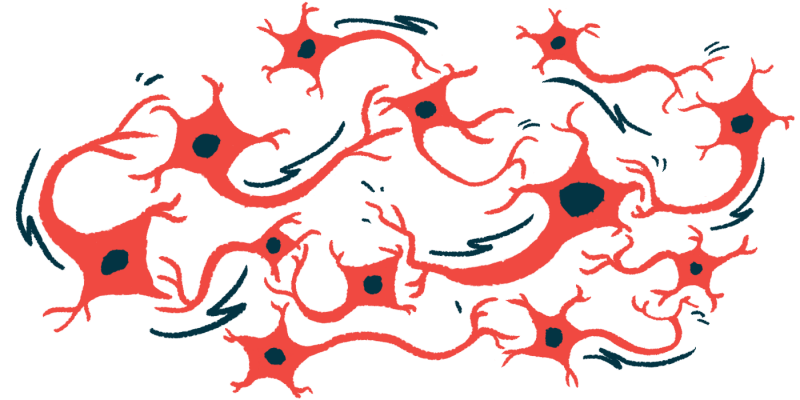2D model may speed treatments for SMA, other neuromuscular diseases

Researchers have developed a two-dimensional (2D) model that mimics the crosstalk between nerve and muscle cells. They intend to use it to screen large numbers of compounds in the hunt for treatments for spinal muscular atrophy (SMA) and other neuromuscular diseases.
“We want to start by seeing if we can achieve more successful outcomes using new combinations of drugs to improve the life of patients with complex neuromuscular diseases,” Mina Gouti, PhD, who heads a stem cell modeling lab at the Max Delbrück Center in Berlin, said in a news release from the German institute.
The 2D model is described in the study, “Efficient generation of a self-organizing neuromuscular junction model from human pluripotent stem cells,” published in Nature Communications.

Voyager, Novartis join to advance next-generation SMA gene therapy
High-throughput screening often used in work toward SMA treatments
Like many other neuromuscular diseases, SMA affects the function of muscles due to problems with motor neurons, the nerve cells that control the muscles in the body. A common disease symptom is muscle weakness across such disorders.
But “these diseases are highly complex, and the causes of the dysfunction can vary widely,” Gouti said. “To better understand the causes and find effective therapies, we need human-specific cell culture models where we can study how motor neurons in the spinal cord interact with the muscle cells.”
Researchers working with Gouti previously developed three-dimensional (3D) neuromuscular organoids, which are tiny, organ-like structures. However, these organoids are too large to be maintained in the lab for the high-throughput screening used in drug discovery.
To get around this limitation, they developed a self-organizing 2D neuromuscular model using human induced pluripotent stem cells (iPSCs). These cells, reprogrammed from adult cells to exhibit stem cell-like properties, can develop into many different types of cells.
Within 20 days, the model contained nerve cells, muscle cells, and neuromuscular junctions — the specialized junctions where motor neurons communicate with muscle fibers, allowing the transmission of signals from the nervous system to initiate muscle contraction.
“High-content imaging reveals self-organized bundles of aligned muscle fibers surrounded by innervating motor neurons that form functional neuromuscular junctions,” the researchers wrote.
These muscle cells contracted spontaneously as a result of their interaction with the nerve cells. To better mimic what happens in the body, the researchers used “trains of brief light flashes” to fire nerve impulses and cause the muscle cells to contract in sync.
“It was exciting to see the muscle cells contracting under the microscope,” said Alessia Urzi, a PhD student at Gouti’s lab and the lead author of the study. “That was a clear sign we were on the right track.”
Problems seen in muscle cells of model derived from SMA type 1 patients
To provide a proof of concept for their model, the researchers used iPSCs from two individuals with severe SMA type 1, the disease’s most common form and one that typically manifests in infancy.
When prompted to form a 2D neuromuscular model, the patient-derived iPSCs developed into muscle cells that were smaller and less elongated than those developing from unaffected cells.
After 50 days of growing in the lab, patient-derived muscle cells “were reduced in length, disorganized, pointing at different directions instead of aligning, and failing to form bundles,” the scientists wrote. They also formed fewer neuromuscular junctions and failed to contract as well.
An “analysis of muscle contraction showed the presence of short-duration weak movements in individual muscle fibers, followed by exhaustion and a complete lack of activity,” they added, noting similar findings in people with SMA.
The model is simple and easily scalable, “ideal for drug screening studies and the development of novel therapeutic approaches for neuromuscular diseases, paving the road to personalized medicine,” the researchers wrote.
Gouti and her team plan to run a high-throughput screening of potential treatments for SMA and amyotrophic lateral sclerosis, another neuromuscular disease, “and then study the most promising candidates in patient-specific organoids,” she said.
The post 2D model may speed treatments for SMA, other neuromuscular diseases appeared first on SMA News Today.



